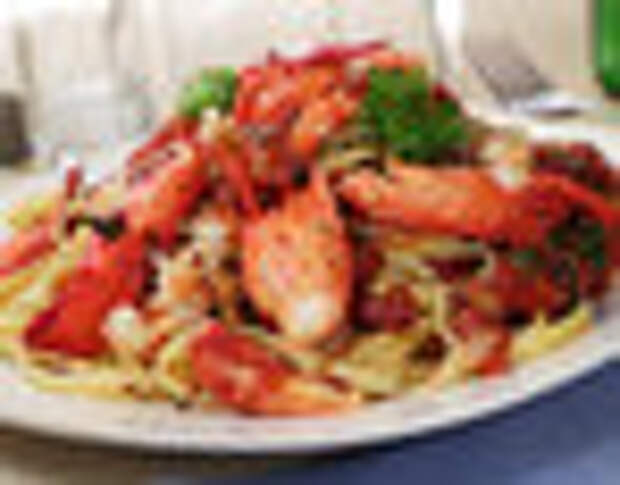
You might wanna double check before digging into that lobster pasta.
Inside Edition recently tested lobster dishes at restaurants all around the country -- from mom-and-pop shops to big chains like Red Lobster -- and found that more than a third of them contain cheap seafood imitations in place of real lobster meat.
Beyoncé would not be pleased about this.
For the test, Inside Edition ordered a lobster dish from each of 28 restaurants nationwide and sent the meat away for DNA testing.
IE said Red Lobster's "lobster bisque" contained at least part langostino, a smaller, cheaper lobster relative. Nathan's, of Coney Island fame, reportedly served a small fish called whiting in its "lobster salad sandwich." And at one eatery in New York City's Little Italy, the "lobster ravioli" was said to be filled with nothing but cheese. Ick.
A spokesperson for Red Lobster told IE that the company "understands that the seasonality and availability of lobster can fluctuate, so our lobster bisque can contain meat from Maine lobster, langostino lobster, or, in some cases, a combination of both," while Nathan's argued that "lobster salad" is "traditionally a mix... made up of seafood items." Read the full report at Inside Edition.
It's sad to say that mislabeling -- intended or otherwise -- isn't a rare occurrence, but a fishy trend. In a 2013 report, Canadian researchers found that "33 percent of fish sold in grocery stores, restaurants and sushi venues in the U.S." is labeled incorrectly. Think farm-raised salmon sold as "wild salmon" and tilapia sold as "red snapper," per another recent investigation from conservation group Oceana.
The U.S. Food and Drug Administration keeps an official master seafood list that explains which types of fish are allowed to be sold under which names in restaurants and grocery stores. For example, langostino should be labeled as such (or as "langostino lobster," as Red Lobster has done), and the lobster you see on the menu could technically be American lobster meat or European lobster meat, by legal standards.
But it definitely can't be white fish. And that's a problem.
Experts say further government investigation may help counteract the fish mislabeling, restoring the real thing to the menu... and we'll make our own bisque until then.
Also on HuffPost:
-- This feed and its contents are the property of The Huffington Post, and use is subject to our terms. It may be used for personal consumption, but may not be distributed on a website.







